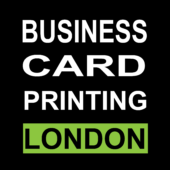Crafting the Perfect Business Card: A Comprehensive Guide
In today’s digital age, where networking is often done through LinkedIn and email exchanges, the traditional business card might seem outdated. However, it remains an essential tool for making a lasting impression in face-to-face interactions. A well-designed business card can convey professionalism, credibility, and personality in a tangible form. So, what exactly should go on a business card? Let’s break it down step by step.
1. Essential Information:
The most critical element of any business card is the essential information. This includes:
- Your Name: This should be prominently displayed, ideally in a larger font size than the rest of the text.
- Job Title/Position: Clarify your role within the company or your area of expertise.
- Company Name: Clearly state the name of your company or organization.
- Contact Information: Include your phone number and email address. If relevant, you can also add your company’s website URL.
2. Design Elements:
The design of your business card is equally important as the information it contains. Consider the following design elements:
- Logo: Incorporate your company logo for brand recognition.
- Color Scheme: Choose colors that align with your brand identity and are visually appealing.
- Font Choice: Use legible fonts that reflect the tone of your business.
- Whitespace: Leave enough whitespace to ensure the card doesn’t look cluttered.
- Texture/Finish: Experiment with different textures or finishes (e.g., matte, glossy) to make your card stand out.
3. Additional Details:
While the essential information should take precedence, you can also include additional details to make your card more memorable:
- Social Media Handles: If your social media presence is relevant to your professional identity, include handles for platforms like LinkedIn or Twitter.
- QR Code: Incorporate a QR code that directs people to your website or LinkedIn profile for easy access to more information.
- Tagline or Slogan: A brief tagline or slogan can help reinforce your brand message.
- Special Offers or Discounts: If applicable, mention any special offers or discounts to incentivize future contact.
Conclusion:
In conclusion, a well-designed business card serves as a powerful networking tool in today’s digital age. By including essential information, thoughtful design elements, and additional details, you can create a card that leaves a lasting impression on potential clients or partners. Remember to strike a balance between professionalism and creativity, ensuring that your card reflects both your personal brand and your company’s identity. So, the next time you attend a networking event or meet a potential client, don’t underestimate the impact of a well-crafted business card. It just might be the key to unlocking new opportunities for your business.
